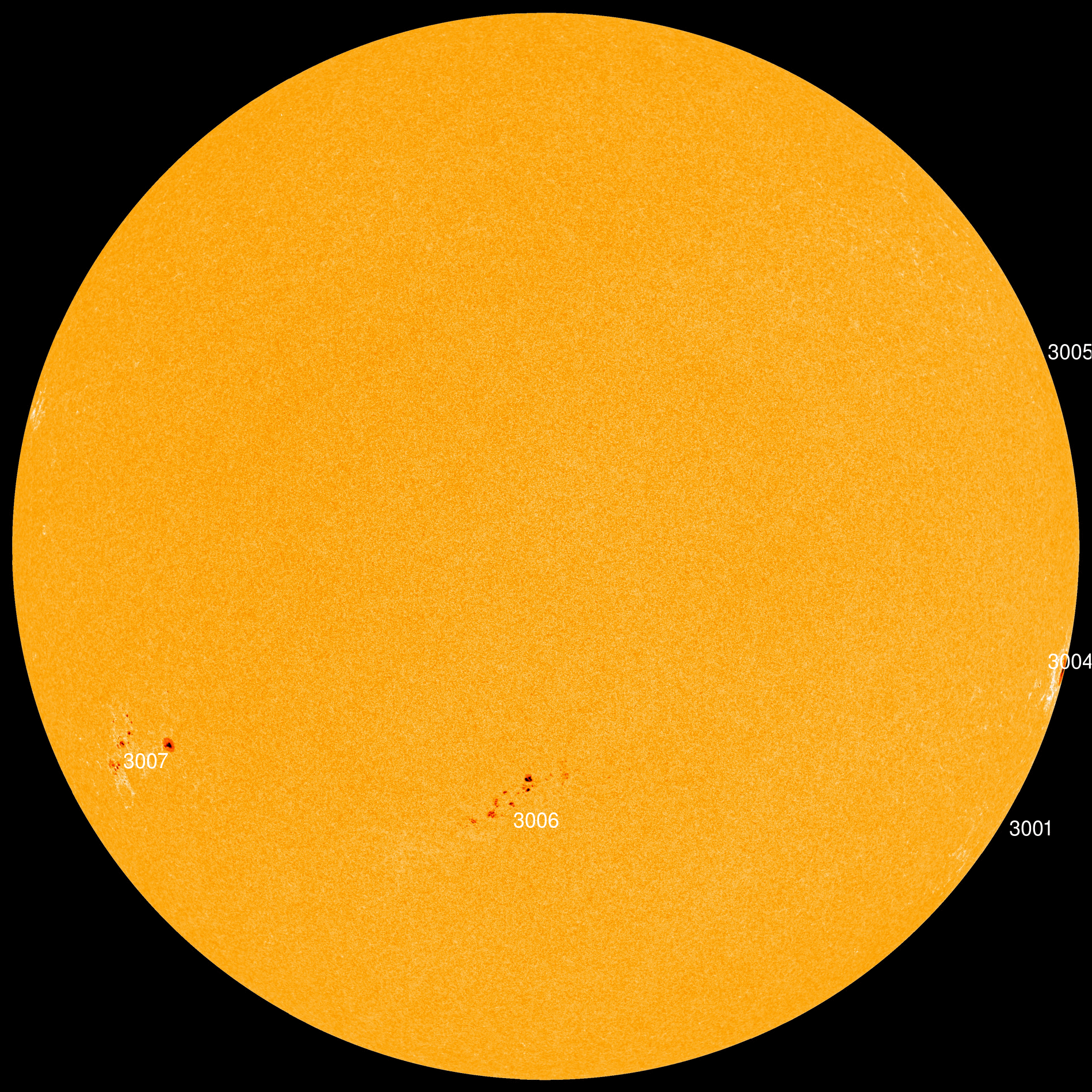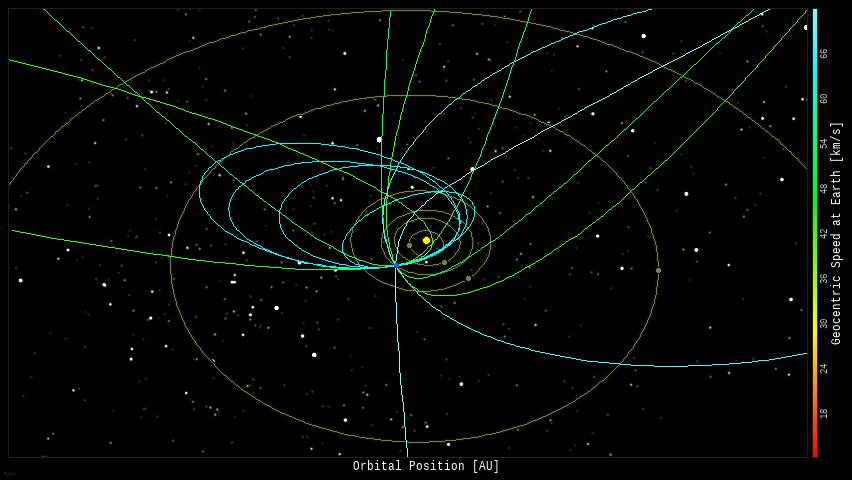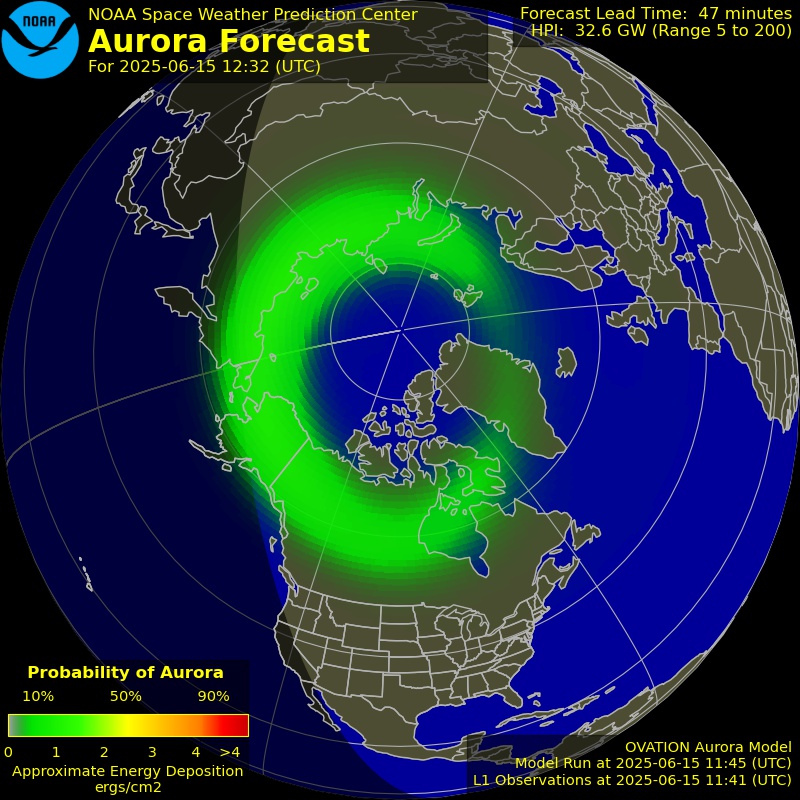M15 Kinda Blew me Away!
I have to admit – when I saw M15 today while working on this post, I stared at it for about 5 minutes and kept saying “Wow!” Yup, that still happens to me!
My granddaughter took me for a walk down the block this weekend – when we got to end of the block she pointed up into the sky and said “Moon!” I looked up, and sure enough, there it was! I was blown away – she’s only two!


I sound like a broken record again: Jupiter, Venus, Mars and Saturn continue to appear in the southeastern predawn sky all week.

The Moon appears near the star Regulus in the western sky at midnight on May 10th.

The Moon appears near the star Spica in the southern sky at midnight on May 14th.

There will be a total lunar eclipse before midnight on May 15th – ending after midnight on May 16th.


- The Moon is a Waxing Gibbous – visible to the southeast in early evening, and up for most of the night.
- The Full Moon occurs on May 16th – rising at sunset, visible high in the sky around midnight, and visible all night.
- After May 16th, the Moon will be a Waning Gibbous – rising after sunset, visible high in the sky after midnight, and visible to the southwest after sunrise.

If you click on the Moon image above, or click this link, you will go to NASA’s Moon Phase and Libration, 2022 page – it will show you what the Moon looks like right now. If you click the image on that page, you will download a high-rez TIFF image annotated with the names of prominent features – helpful for logging your lunar observations!
Moon News
Total Lunar Eclipse – May 15-16
Lunar samples from 1972 opened for first time!

Three sunspots rotating out of view, and two large sunspots on the Sun’s earthward face – flaring quite a bit.
Spaceweather.com says “Earth-orbiting satellites have just detected an X1-class solar flare. The source is “mixed-up” sunspot AR3006. Radiation from the flare ionized the top of Earth’s atmosphere, causing a shortwave radio blackout over the Atlantic Ocean.”

Videos courtesy of NASA/SDO and the AIA, EVE, and HMI science teams.
You can view the Sun in near real-time, in multiple frequencies here: SDO-The Sun Now.
You can create your own time-lapse movies of the Sun here: AIA/HMI Browse Data.
You can browse all the SDO images of the Sun from 2010 to the present here: Browse SDO archive.
Amateur Solar Astrophotography
Details: “The sun this morning 09 May 2022
Protuberance and filament on the edge of a limb. Wonderful show.
Ts70 – Daystar Quark – Asi 120mms
AS3 – Astrosurface and Photoshop.
Good sky to all.”
Solar Corona
Solar wind speed is 298.3 km/sec ▼ with a density of 8.14 protons/cm3 ▲ at 0231 UT.
Click here to see a near real-time animation of the corona and solar wind from the Solar & Heliospheric Observatory (SOHO).
Sun News:
Been seeing quite a few of these lately!

- Near-Earth Objects (NEOs) discovered this month: 41, this year: 1100 (+39), all time: 29,023 (+39)
- Potentially Hazardous Asteroids (PHAs): 2262 (updated 2022-05-03)
- Total Minor Planets discovered (MPC): 1,194,078 (-7 updated 2022-05-10)
Upcoming Earth-asteroid encounters:
| Asteroid | Date(UT) | Miss Distance | Velocity (km/s) | Diameter (m) |
| 2022 JD1 | 2022-May-10 | 3.6 LD | 11 | 16 |
| 2019 JE | 2022-May-11 | 4.9 LD | 7.2 | 21 |
| 2022 JB1 | 2022-May-11 | 12.7 LD | 12.1 | 45 |
| 2022 JQ | 2022-May-11 | 8.6 LD | 25.1 | 44 |
| 2022 JR | 2022-May-12 | 7.4 LD | 9.4 | 22 |
| 2022 JO | 2022-May-15 | 8.8 LD | 7.7 | 24 |
| 2022 JU | 2022-May-15 | 19.9 LD | 6 | 26 |
| 2012 UX68 | 2022-May-15 | 2.8 LD | 8.2 | 54 |
| 388945 | 2022-May-15 | 15 LD | 8.2 | 293 |
| 2022 JC1 | 2022-May-16 | 6.4 LD | 10 | 32 |
| 2013 UX | 2022-May-17 | 16.8 LD | 16.3 | 141 |
| 2021 WY | 2022-May-18 | 16.9 LD | 9 | 65 |
| 2022 HD1 | 2022-May-20 | 15.3 LD | 6.8 | 60 |
| 7335 | 2022-May-27 | 10.5 LD | 13.1 | 1078 |
| 2022 JY | 2022-May-28 | 15.2 LD | 11 | 68 |
| 2021 KO2 | 2022-May-30 | 3.1 LD | 14.8 | 9 |
| 2022 HT2 | 2022-May-30 | 11.9 LD | 15.7 | 224 |
| 2020 DA4 | 2022-Jun-01 | 5.5 LD | 8.9 | 26 |
| 2021 GT2 | 2022-Jun-06 | 9.5 LD | 7.5 | 50 |
| 2018 LU2 | 2022-Jun-09 | 14.8 LD | 10.7 | 16 |
| 2006 XW4 | 2022-Jun-12 | 5.9 LD | 7.3 | 49 |
| 2022 GU6 | 2022-Jun-12 | 3.2 LD | 8.4 | 88 |
| 2015 WP2 | 2022-Jun-26 | 18.5 LD | 11.4 | 3 |
| 2021 EL4 | 2022-Jul-05 | 19.8 LD | 9.5 | 25 |
Asteroid News:

On May 9, 2022, the NASA All Sky Fireball Network reported 10 fireballs!
(6 sporadics, 3 eta Aquariids, 1 eta Lyrid)

Fireball News:
If you see a bright meteor or a fireball, please REPORT IT to the American Meteor Society and the International Meteor Organization!

Position of the planets & several spacecraft in the inner solar system on May 10th:

Position of the planets in the middle solar system – May 2022:

Position of the planets in the outer solar system first half of 2022:

Solar System News
Rumble on Mars!

See a list of current NASA missions here: https://www.jpl.nasa.gov/missions?mission_status=current

ex·o·plan·et /ˈeksōˌplanət/, noun: a planet orbiting a star other than the Sun.
* Confirmed Planets Discovered by TESS refers to the number planets that have been published in the refereed astronomical literature.
* TESS Project Candidates refers to the total number of transit-like events that appear to be astrophysical in origin, including false positives as identified by the TESS Project.
* TESS Project Candidates Yet To Be Confirmed refers to the number of TESS Project Candidates that have not yet been dispositioned as a Confirmed Planet or False Positive.
Exoplanet News:
May 5, 2022
Seven Planets and 180 Parameter Sets Added
This week’s seven new planets were found either through their radial velocities (pi Men d, TYC 2187-512-1 b, and iot Dra c) or spied on by TESS during their transits (TOI-1246 b, c, d, & e). We’ve also added 180 new sets of parameters—most of them from Patel & Espinoza 2022. Find the new data in the Planetary Systems Table and its companion table, Planetary Systems Composite Parameters. – exoplanetarchive.ipac.caltech.edu

LIVE Aurora cam, anyone?
SpaceWeather.com Realtime Aurora Gallery: https://spaceweathergallery.com/aurora_gallery.html
Latest Aurora Oval Forecast

- Visit an International Dark Sky Park: https://www.darksky.org/our-work/conservation/idsp/parks/
- If you live in Michigan, visit the Michigan Dark Skies site: https://sites.lsa.umich.edu/darkskies/

Exciting new results from the Event Horizon Telescope – May 12!
Assistant Professor Tim Wisner tweets that the EHT has been observing the black hole in the center of the Milky Way: Sgr A*
Messier Tour: M15 – The Great Pegasus Cluster

Messier 15 (M15), also known as the Great Pegasus Cluster, is a globular cluster located in the northern constellation Pegasus. The cluster has an apparent magnitude of 6.2 and lies at a distance of 33,600 light years (10,000 parsecs) from Earth. It has the designation NGC 7078 in the New General Catalogue.
Messier 15 is one of the oldest known globulars in our galaxy. It has an estimated age of 12 billion years and only 1 percent of the Sun’s iron content. – messier-objects.com

Messier 15 has an apparent diameter of 18 arc minutes, corresponding to a linear diameter of about 175 light years. The tidal radius of M15 spans 21.5 arc minutes, or about 210 light years from the cluster’s centre.
Messier 15 has a density classification IV and is one of the most densely concentrated clusters of its kind. The cluster is notable for its steep central cusp, with an exceptionally large number of stars orbiting what is likely a central black hole. – messier-objects.com

The central density cusp is a result of the cluster having undergone a core collapse, a contraction of its core region. This is a common occurrence in globular clusters as they evolve: Messier 30 and Messier 70 also contain a collapsed core. A total of 21 of the 157 known globular clusters in the Milky Way, and possibly 8 more, including Messier 62 and Messier 79, have undergone a core collapse.
The core of Messier 15 is very small – about 0.14 arc minutes or 1.4 light years – compared to the cluster’s size. Half the cluster’s mass is concentrated within the central 10 light years, or 1.06 arc minutes. Scientists have theorized that either the cluster contains a supermassive black hole at its core or the concentration of mass is a result of the gravitational interaction of the stars in this area. A survey of the cluster’s inner 22 light years alone revealed about 30,000 stars. – messier-objects.com

The cluster contains more than 100,000 stars, including a considerable number of variables (112) and pulsars (8), neutron stars formed in supernova explosions that occurred when M15 and the universe itself were still young. – messier-objects.com
Cover Image: Messier 15. Credits: ESA/NASA
Messier Object List: [Link]
Software Apps used for this post:
NASA Eyes on the Solar System: an immersive 3D solar system and space mission simulator – free for the PC /MAC.
Stellarium: a free web-based planetarium app. It’s a great tool for planning observing sessions.
SpaceEngine – Explore the universe in 3D and VR!
Worldwide Telescope – operated by the American Astronomical Society (AAS).




